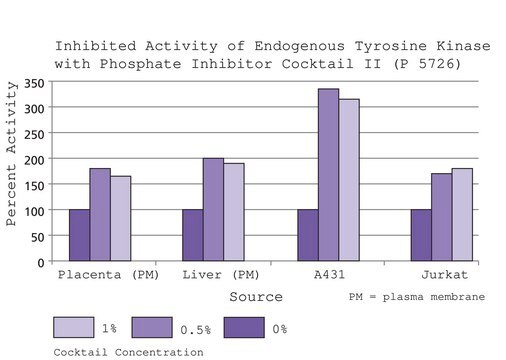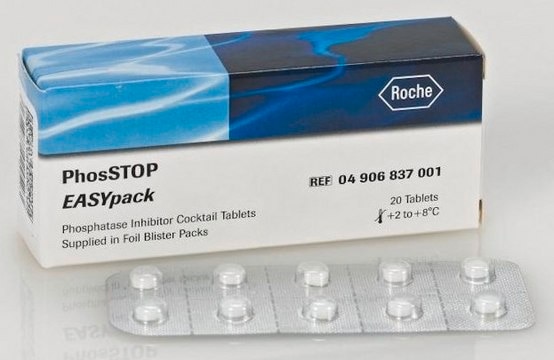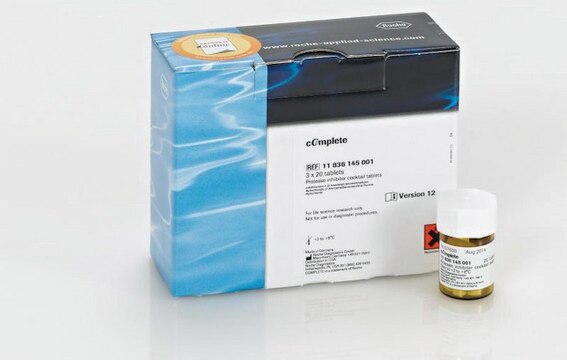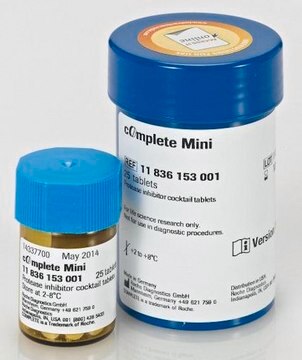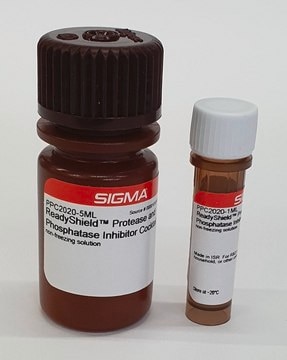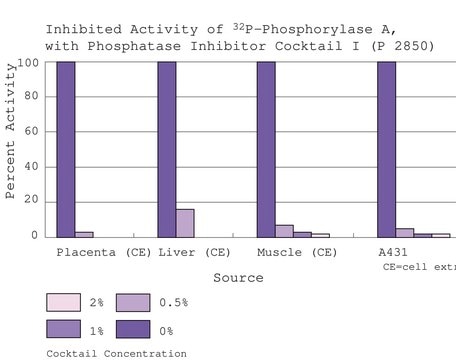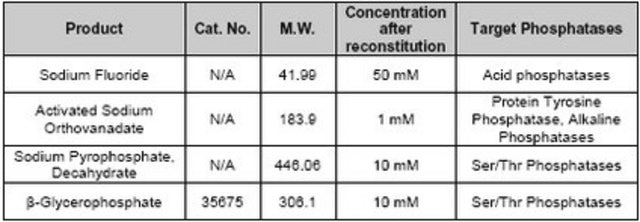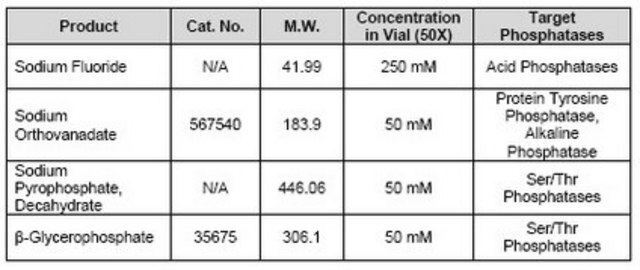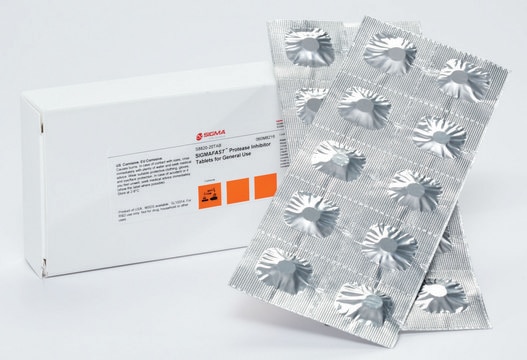PPC1010
Protease and Phosphatase Inhibitor Cocktail
DMSO solution, for the inhibition of serine, cysteine, acid proteases, aminopeptidase, serine/threonine protein phosphatases and L-isozymes of alkaline phosphatase
Synonym(s):
Protease and Phosphatase Inhibitor Mix, Protease and phosphatase inhibitor
About This Item
Recommended Products
product name
Protease and Phosphatase Inhibitor Cocktail,
form
DMSO solution
Quality Level
packaging
pkg of 1 ml, 5 ml ×
shipped in
wet ice
storage temp.
−20°C
Related Categories
General description
Application
- for cellular protein extraction
- to lyse purified CD4+ T cells
- to prepare protein extracts from placental tissues and cells
Preparation Note
Other Notes
signalword
Warning
hcodes
Hazard Classifications
Eye Irrit. 2 - Skin Irrit. 2
wgk_germany
WGK 2
flash_point_f
188.6 °F
flash_point_c
87 °C
Certificates of Analysis (COA)
Search for Certificates of Analysis (COA) by entering the products Lot/Batch Number. Lot and Batch Numbers can be found on a product’s label following the words ‘Lot’ or ‘Batch’.
Already Own This Product?
Find documentation for the products that you have recently purchased in the Document Library.
Customers Also Viewed
Related Content
An overview of cell lysis and protein extraction methods including detergent solubilization, freeze-thaw lysis, osmotic shock, sonication, enzymatic cell lysis, and mechanical disruption techniques such as Dounce, Polytron, and mortar and pestle homogenization.
Our team of scientists has experience in all areas of research including Life Science, Material Science, Chemical Synthesis, Chromatography, Analytical and many others.
Contact Technical Service
